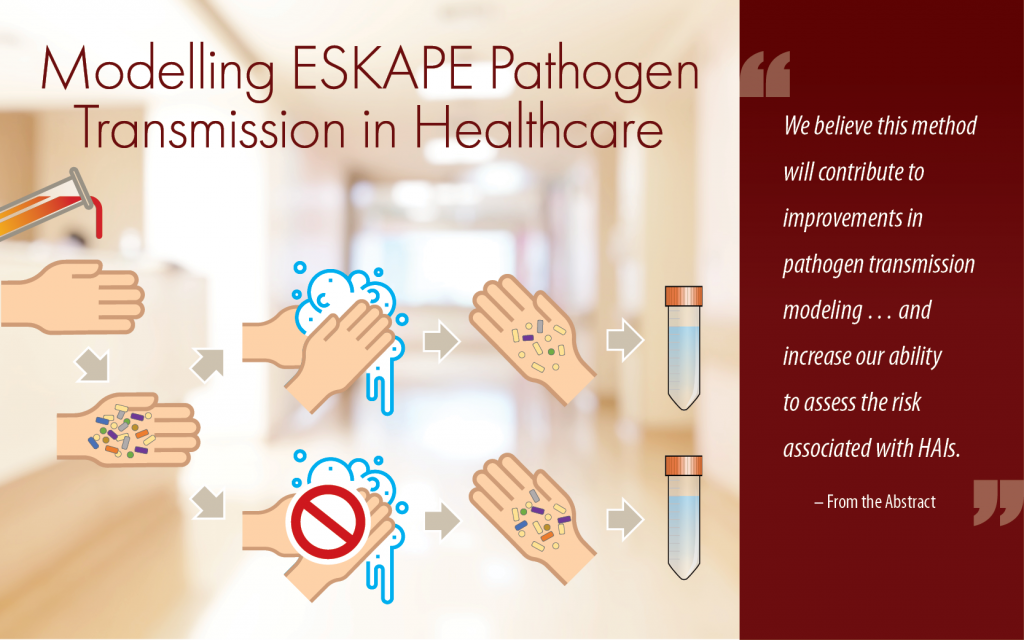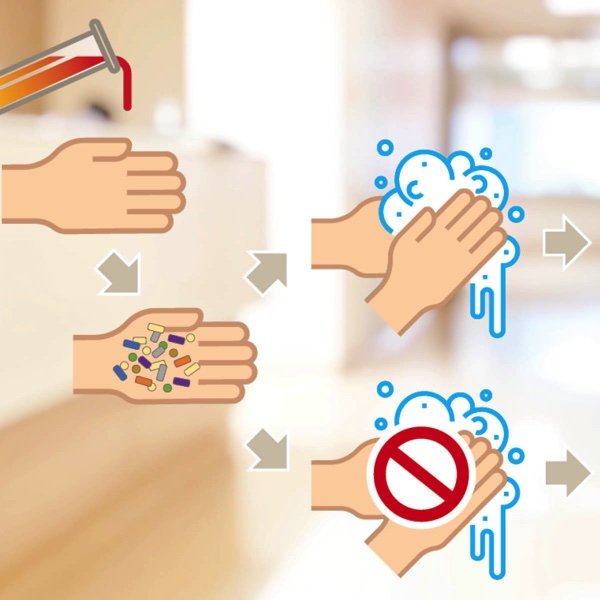
Title: Simulating Transmission of ESKAPE Pathogens Plus C. difficile in Relevant Clinical Scenarios
ABSTRACT
Background
The prevalence of healthcare-acquired infections (HAI) and rising levels of antimicrobial resistance places significant economic and public health burdens on modern healthcare systems. A group of highly drug resistant pathogens known as the ESKAPE pathogens, along with C. difficile, are the leading causes of HAIs. Interactions between patients, healthcare workers, and environmental conditions impact disease transmission. Studying pathogen transfer under varying contact scenarios in a controlled manner is critical for understanding transmission and disinfectant strategies. In lieu of human subject research, this method has the potential to contribute to modeling the routes of pathogen transmission in healthcare settings.
Methods
To overcome these challenges, we have developed a method that utilizes a synthetic skin surrogate to model both direct (skin-to-skin) and indirect (skin-to-fomite-to-skin) pathogen transfer between infected patients and healthy healthcare workers. This surrogate material includes a background microbiome community simulating typical human skin flora to more accurately mimic the effects of natural flora during transmission events.
Results
We demonstrate the ability to modulate individual bacterial concentrations within this microbial community to mimic bacterial concentrations previously reported on the hands of human subjects. We also explore the effect of various decontamination approaches on pathogen transfer between human subjects, such as the use of handwashing or surface disinfectants. Using this method, we identify a potential outlier, S. aureus, that may persist and retain viability in specific transfer conditions better than the overall microbial community during decontamination events.
Conclusions
Our work describes the development of an in vitro method that uses a synthetic skin surrogate with a defined background microbiota to simulate skin-to-skin and skin-to fomite-to skin contact scenarios. These results illustrate the value of simulating a holistic microbial community for transfer studies by elucidating differences in different pathogen transmission rates and resistance to common decontamination practices. We believe this method will contribute to improvements in pathogen transmission modeling in healthcare settings and increase our ability to assess the risk associated with HAIs, although additional research is required to establish the degree of correlation of pathogen transmission by skin or synthetic alternatives.
View complete paper on BMC Infectious Diseases
Authors: Katharina L. Weber, Danielle S. LeSassier, Anthony D. Kappell, Kathleen Q. Schulte, Nicole Westfall, Nicolette C. Albright, Gene D. Godbold, Veena Palsikar, Carlos A. Acevedo, Krista L. Ternus & F. Curtis Hewitt

